We Were Johnny On The Spot! 90 Minutes Early! (Page Two)
This year’s biggest and most noticeable attraction is the addition of another Ferris wheel at the west end of the fair grounds. The new wheel, called the La Grande Wheel XL features over 500,000 LED lights and 36 air conditioned cabins that play music and offer stunning views of Orange County.
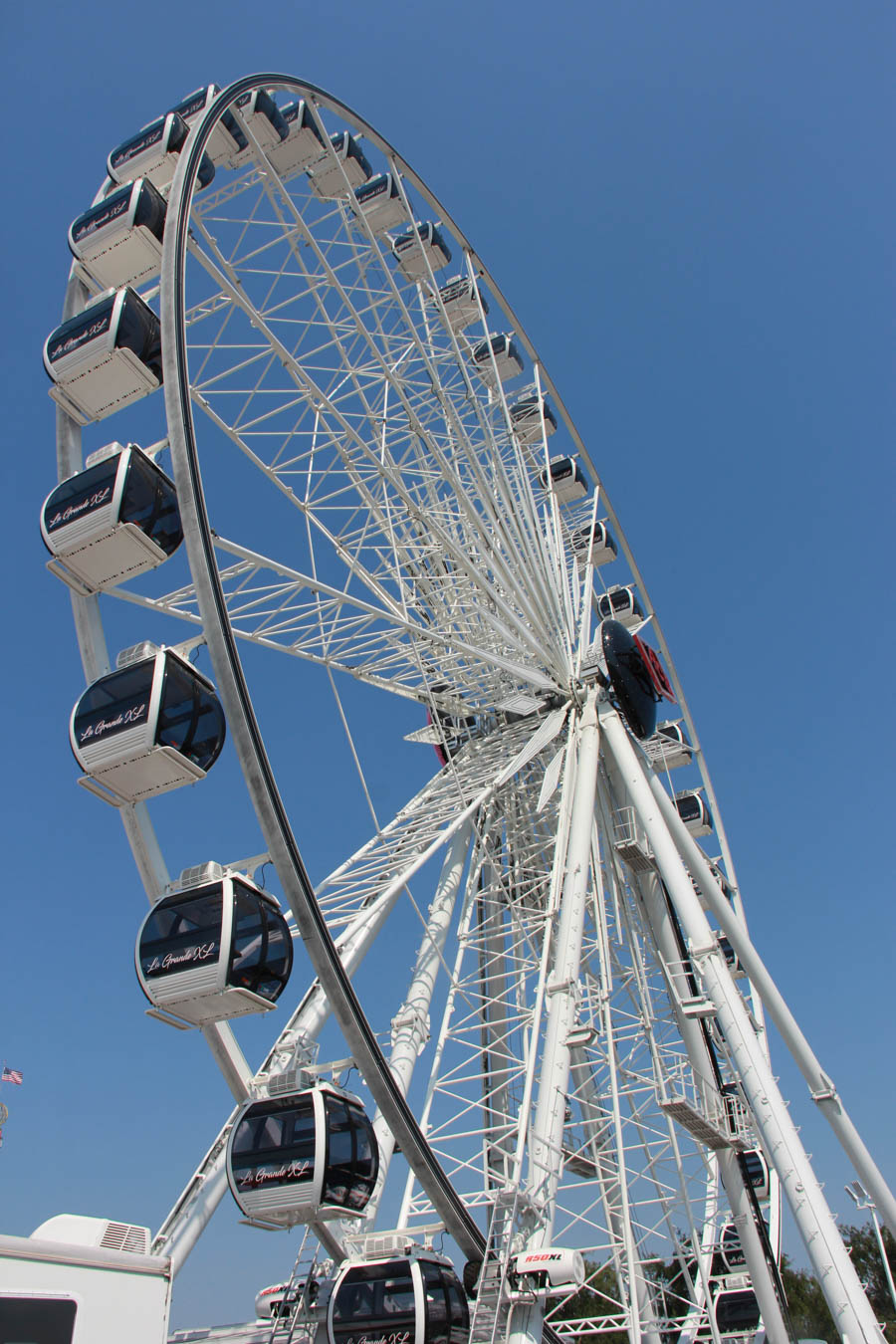
We got a great view of the new ferris wheel from our parking spot!
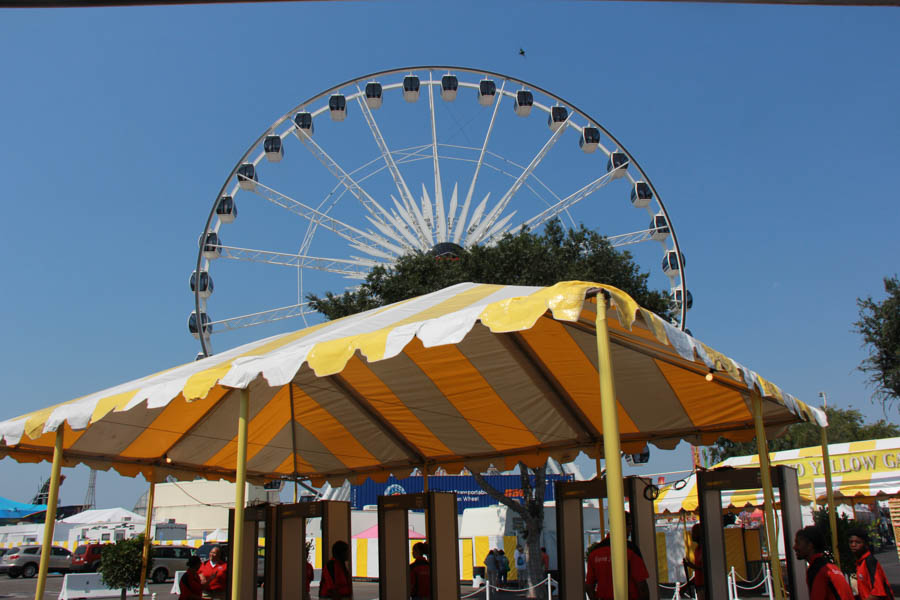
The wheel was really large!

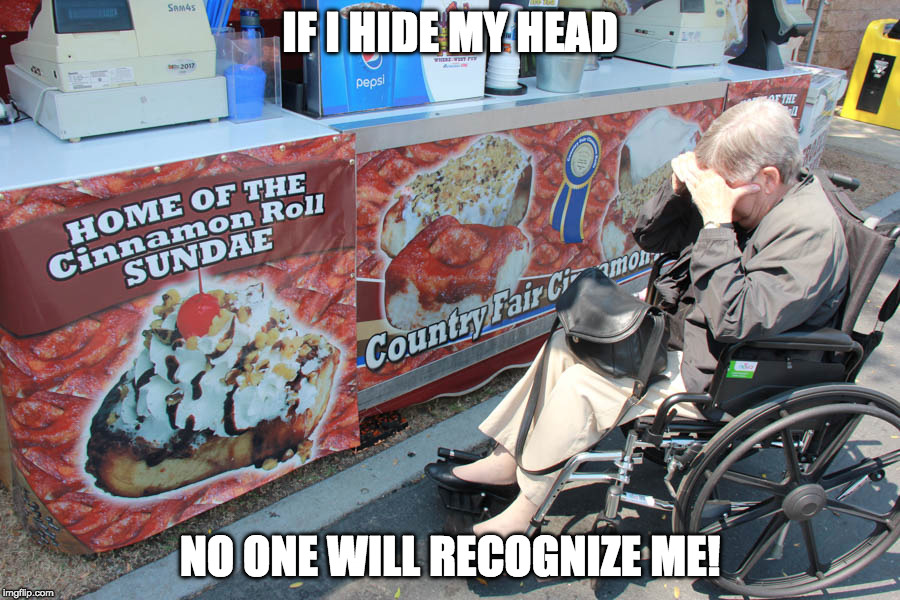
We had our cinnamon roll but these days, we split it!
(300 calories minimum)

It just smells so good!

We dine in peace and quiet between the concession stands
Did You Know? - A concession stand (American English), snack kiosk or snack bar (British English, Irish English) is a place where patrons can purchase snacks or food at a cinema, amusement park, fair, stadium, or other entertainment venue.
Some events or venues contract out the right to sell food to third parties. Those contracts are often referred to as a concession — hence the name for a stand where food is sold.
Usually prices for goods at concession stands are greater than elsewhere for the convenience of being close to an attraction, with outside food and drink being prohibited, and they often contribute significant revenue to the venue operator

They even bring flowers to decorate the stand,
the Morning Glories were beautiful!
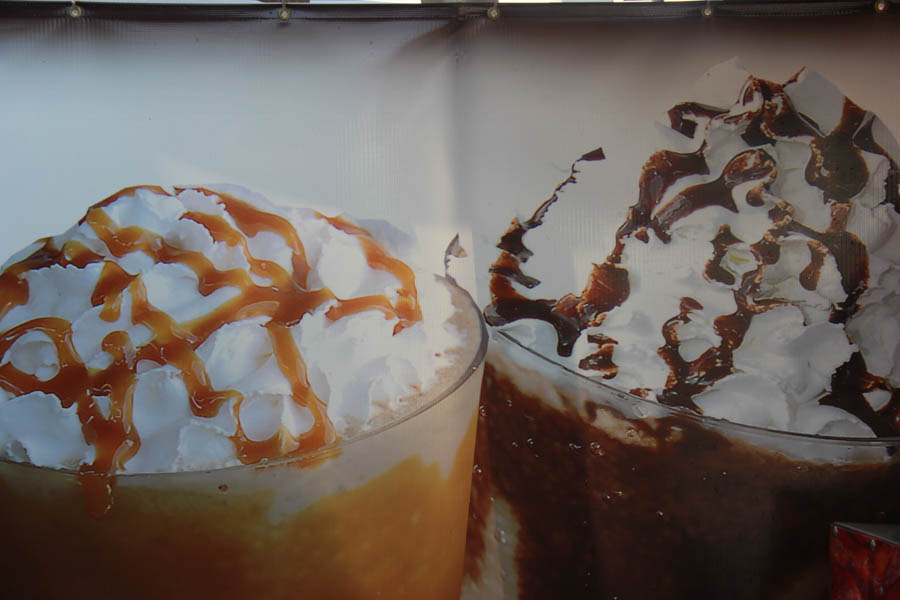
...and we had our drink!
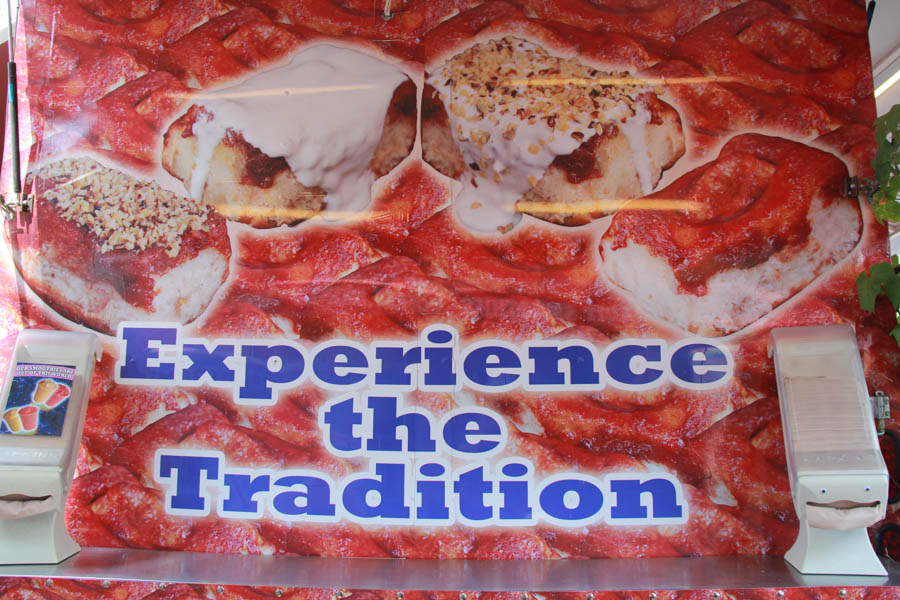
We always, for at least 30 years, do the cinnamon roll breakfast first thing!

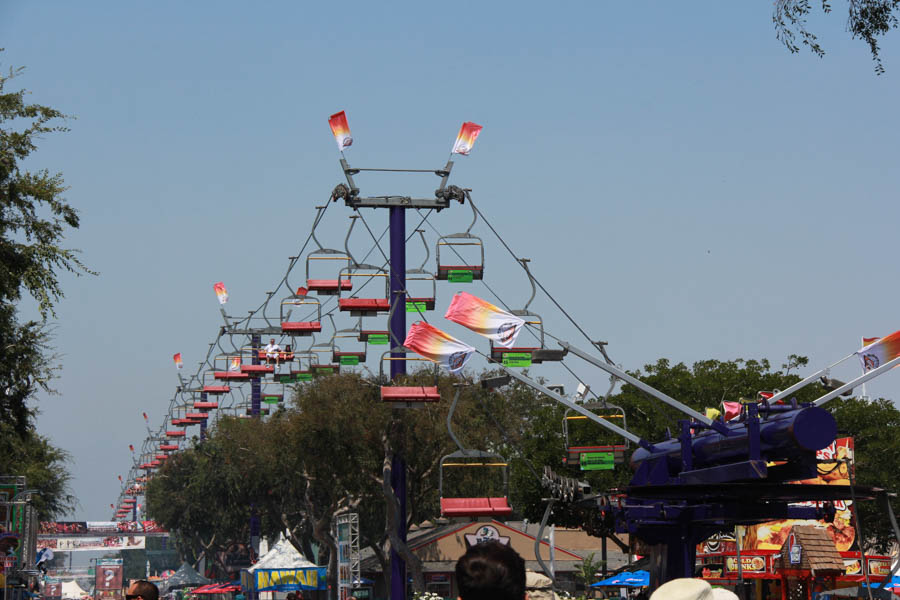
We waited until later to take the skyway!

OMG... The fires are just started and the smells are beginning
to spread over the fair... We were getting hungry again!
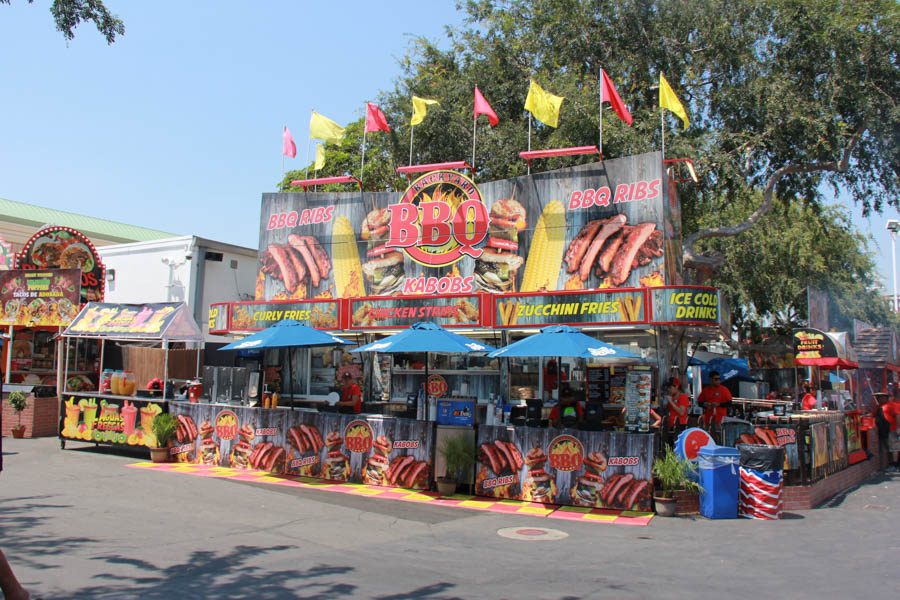
Quick left turn and into the first display building!
Must escape the smoke!

We quickly entered...
Did You Know? - Culinary artist, in which culinary means "related to cooking", is the art of the preparation, cooking and presentation of food, usually in the form of meals. People working in this field – especially in establishments such as restaurants – are commonly called "chefs" or "cooks", although, at its most general, the terms "culinary artist" and "culinarian" are also used. Table manners ("the table arts") are sometimes referred to as a culinary art.

What do we see? Cookies galore!

Remember these? They worked!
Did You Know? - Early electric stoves were unsatisfactory due to the cost of electricity (compared with wood, coal, or city gas), limited power available from the electrical supply company, poor temperature regulation, and short life of heating elements. The invention of nichrome alloy for resistance wires improved the cost and durability of heating elements.
In the United States, even though three companies had introduced electric stoves in 1908, penetration was rare; an electric stove was still considered a novelty in the 1920s. By the 1930s, decreased cost of electric power and modernized styling of electric stoves had greatly increased their acceptance.
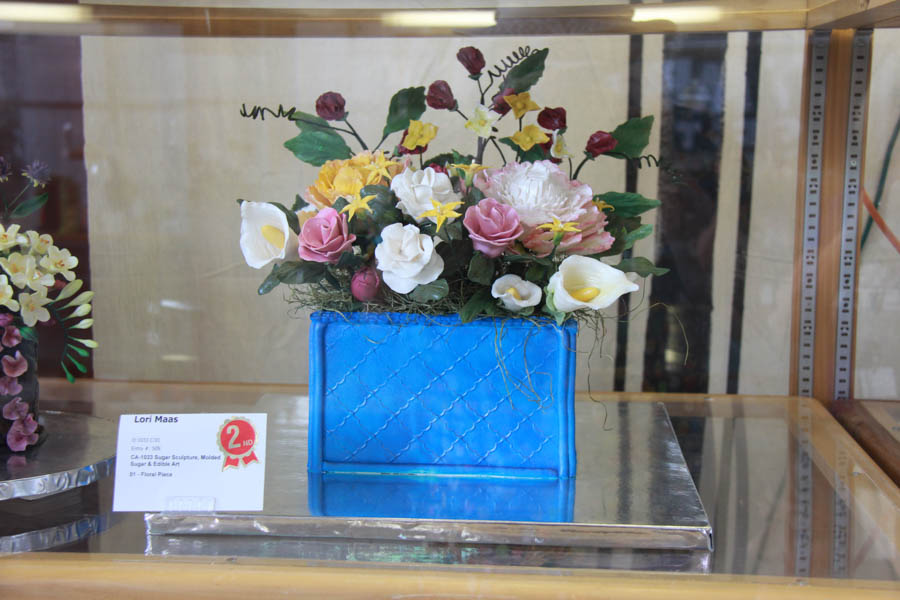
Yes indeed! it is a cake! The flowers are sugar
and the box has a quilted effect!

Even a picture shot through the glass shows the details of this cake!


Don't know why but we enjoy seeing the table settings. People are so creative and it is not easy. Take a look at the entry guide for this years table setting competition! You almost have to be a PhD to get through all the details!
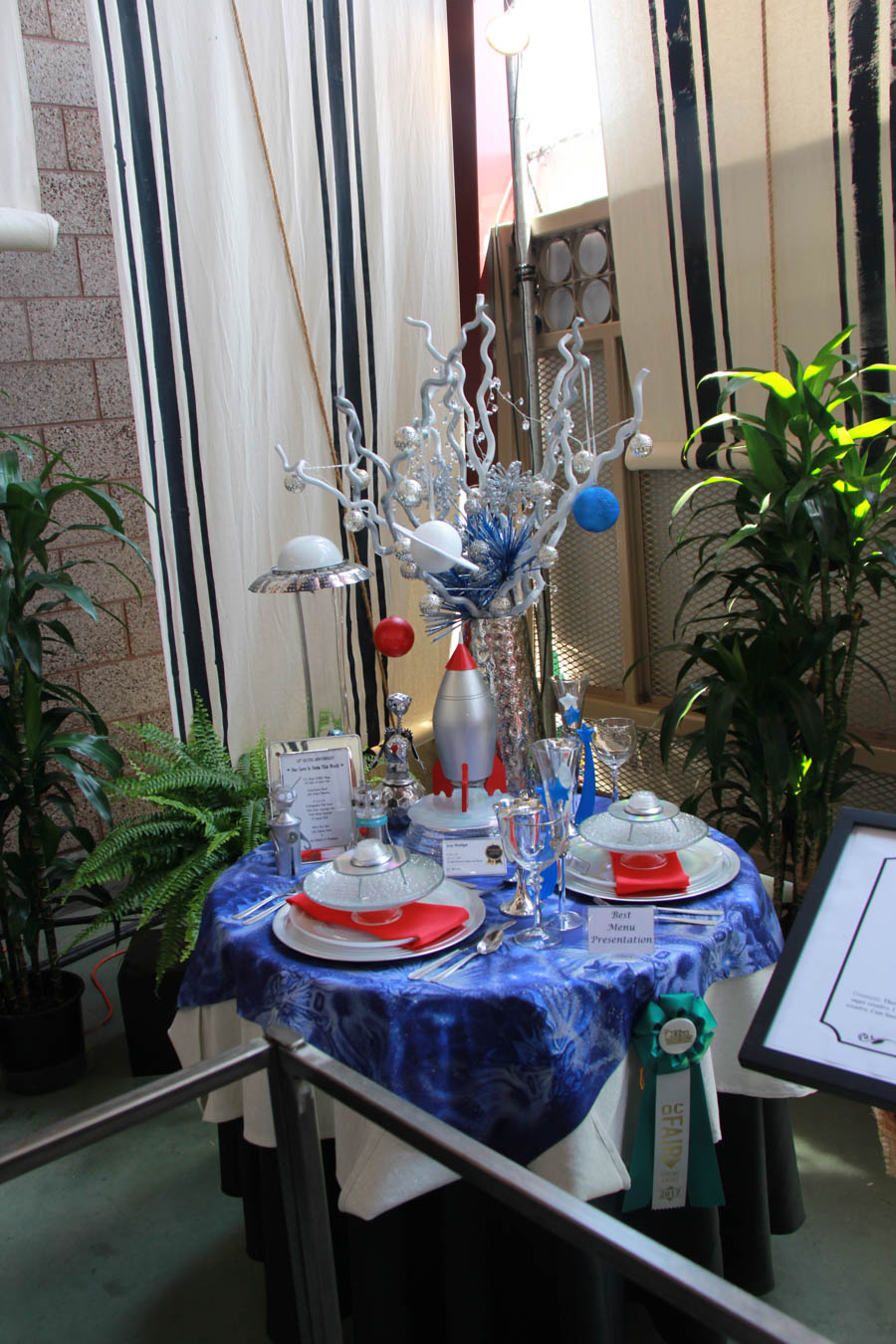
We examined this one carefully!
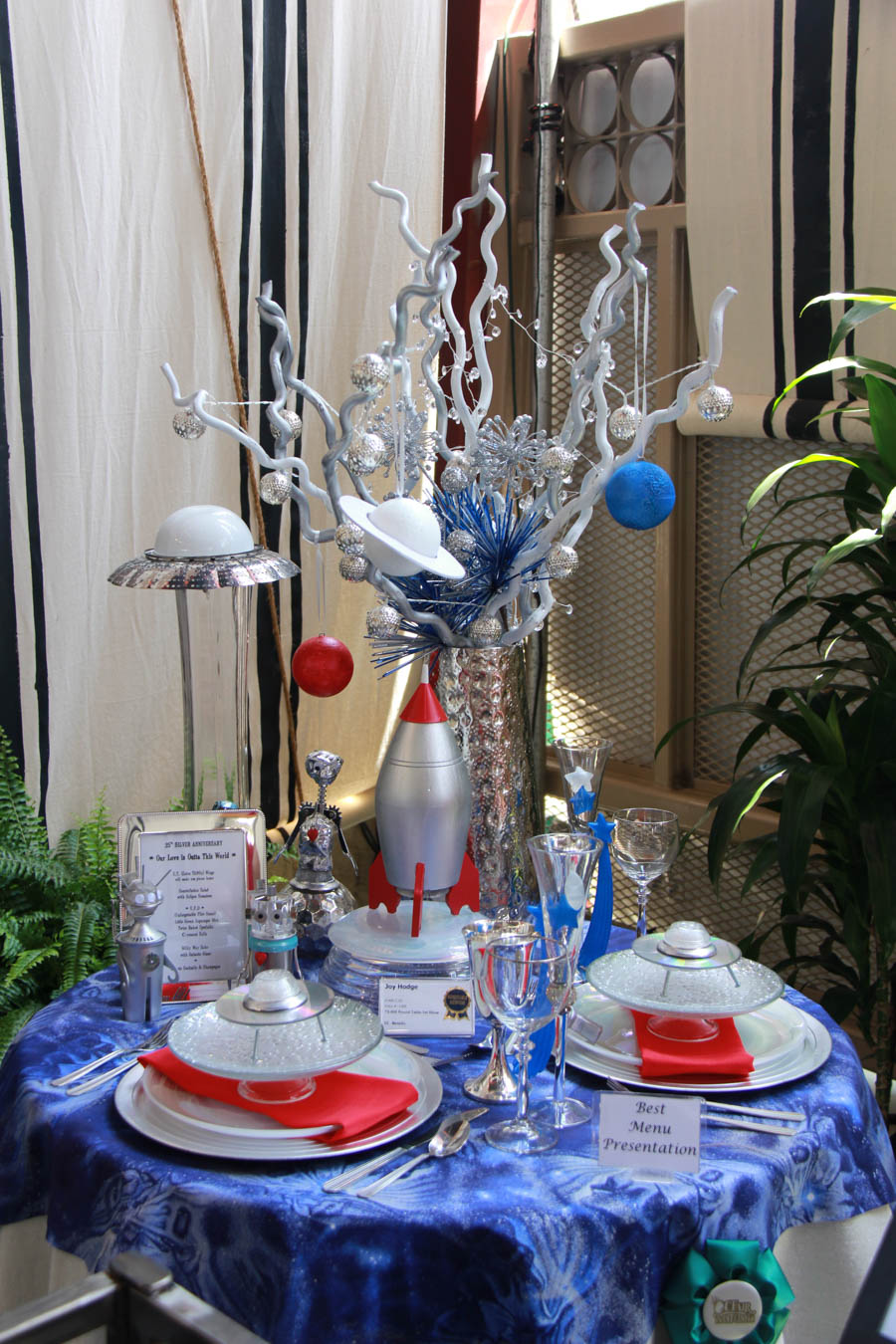
Yes... It was "Out Of This World"
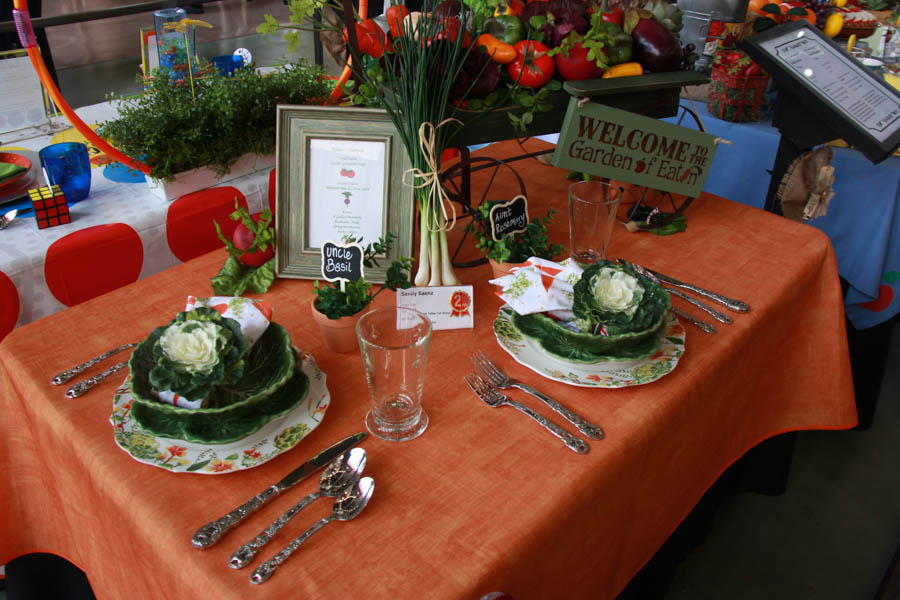
Uncle Basil and Aunt Rosemary come to dinner

No excuse for being late!
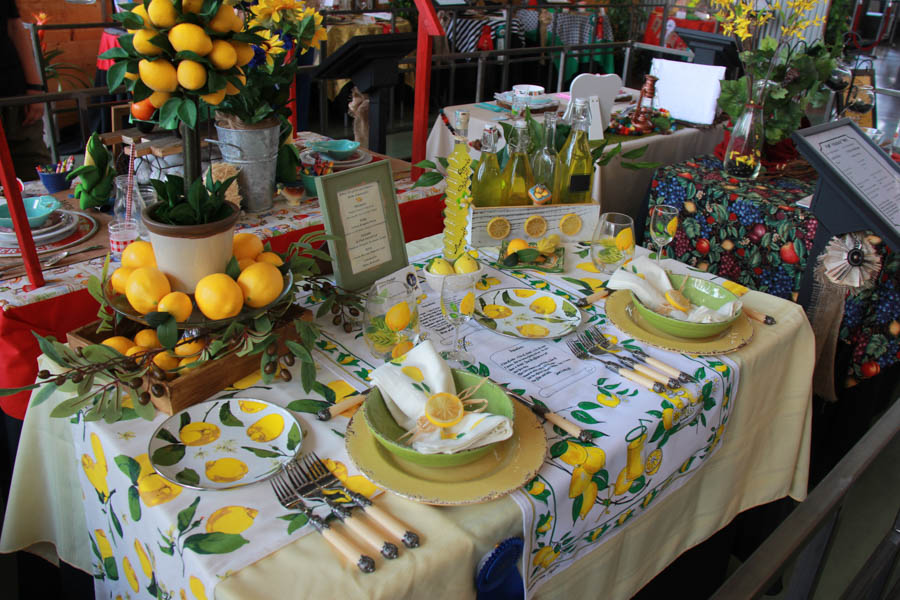
No sour pusses allowed here!

Traditional clear setting
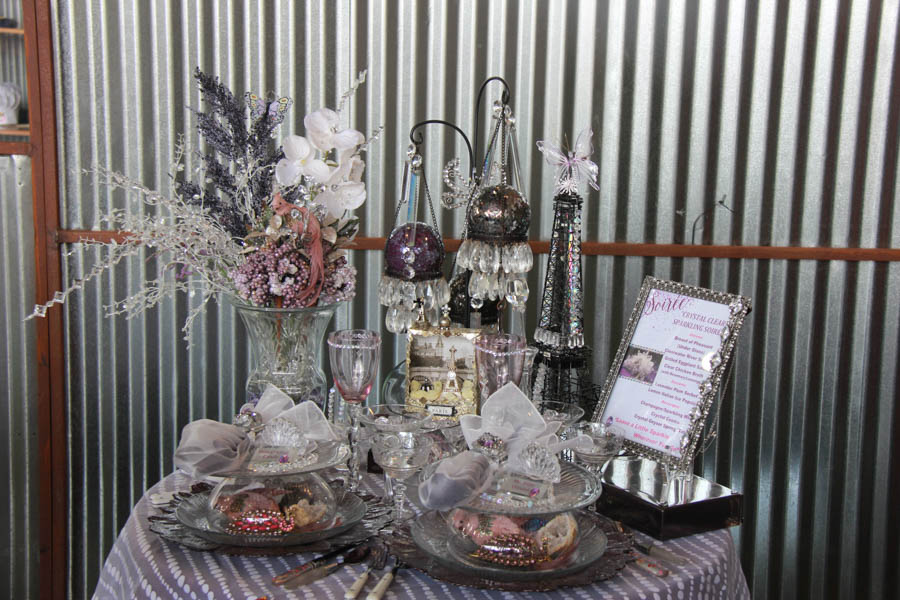
Back in the day!
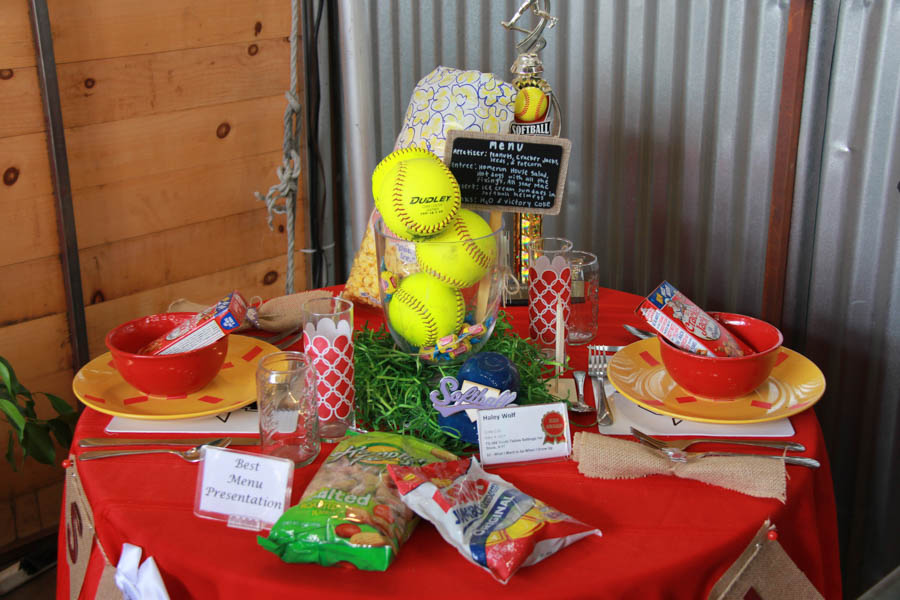
Hot dogs for dinner we bet!

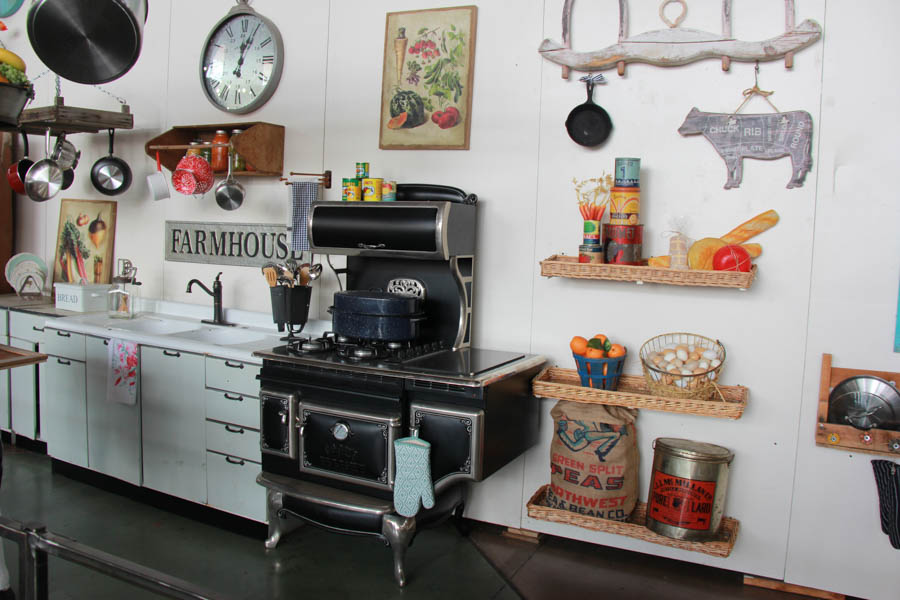
Can't imagine how people cooked with the old wood burning stoves
Did You Know? - A wood-burning stove (or wood burner or log burner) is a heating appliance capable of burning wood fuel and wood-derived biomass fuel, such as wood pellets. Generally the appliance consists of a solid metal (usually cast iron or steel) closed fire chamber, a fire brick base and an adjustable air control.
The first wood burning stove was patented in Strasbourg in 1557, two centuries before the Industrial Revolution would make iron an inexpensive and common material, so such stoves were high end consumer items and only gradually spread in use.
The stove is connected by ventilating stove pipes to a suitable chimney or flue, which will fill with hot combustion gases once the fuel is ignited. The chimney or flue gases must be hotter than the outside temperature to ensure combustion gases are drawn out of the fire chamber and up the chimney. Many wood-burning stoves are engineered such that they can be converted to multi-fuel stoves with the addition of a grate.
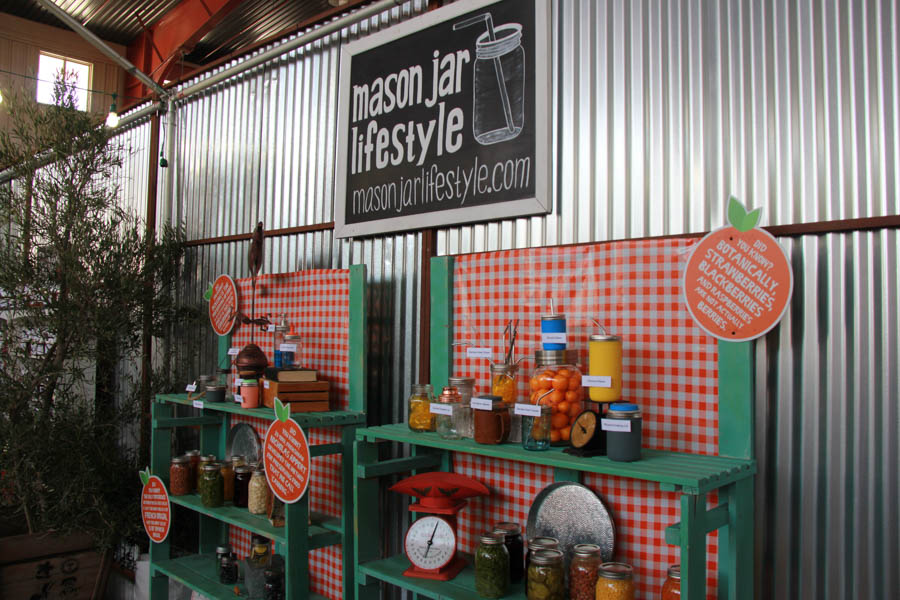
Canning is always an interesting display area!
Did You Know? - Canning is a method of preserving food in which the food contents are processed and sealed in an airtight container. Canning provides a shelf life typically ranging from one to five years, although under specific circumstances it can be much longer.
A freeze-dried canned product, such as canned dried lentils, could last as long as 30 years in an edible state. In 1974, samples of canned food from the wreck of the Bertrand, a steamboat that sank in the Missouri River in 1865, were tested by the National Food Processors Association.
Although appearance, smell and vitamin content had deteriorated, there was no trace of microbial growth and the 109-year-old food was determined to be still safe to eat.
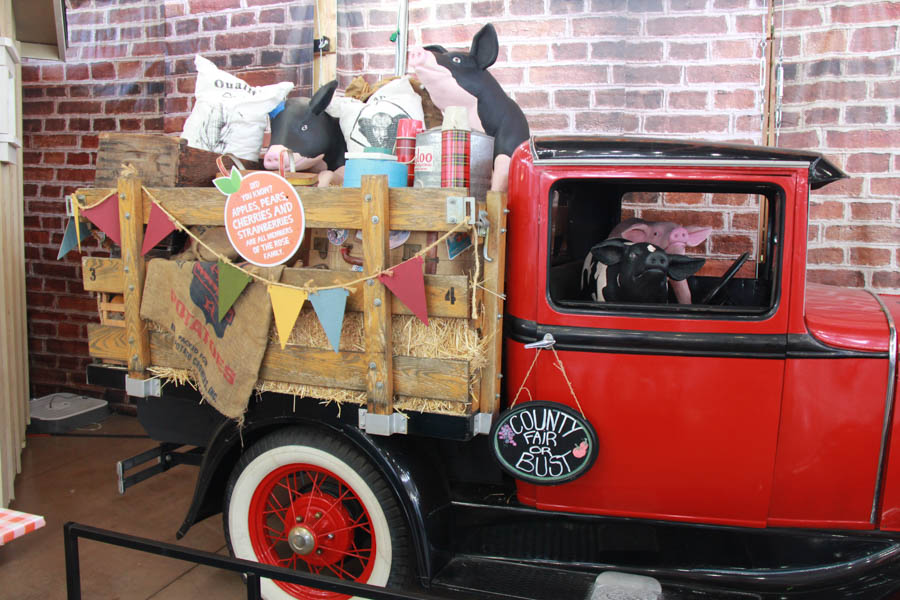
When pigs fly, we mean drive!
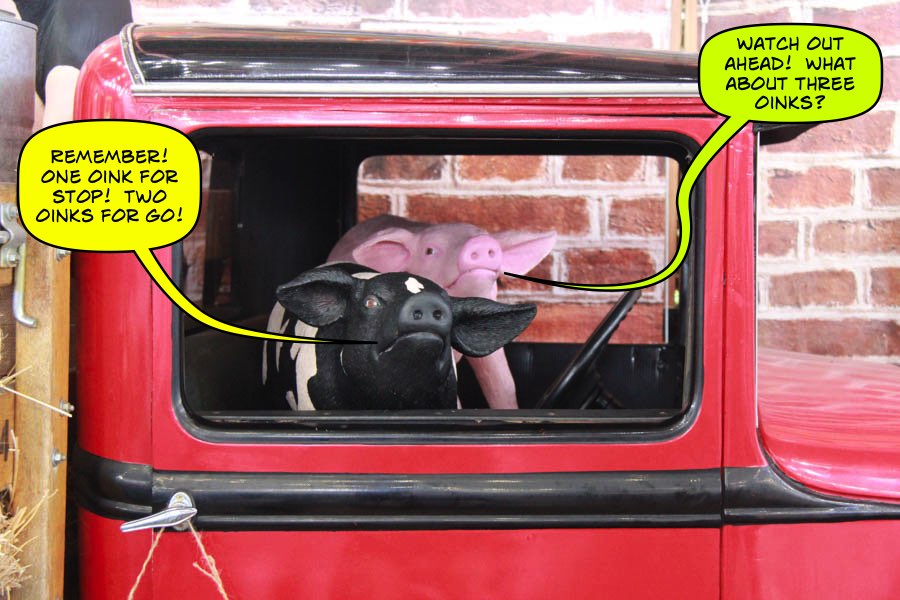
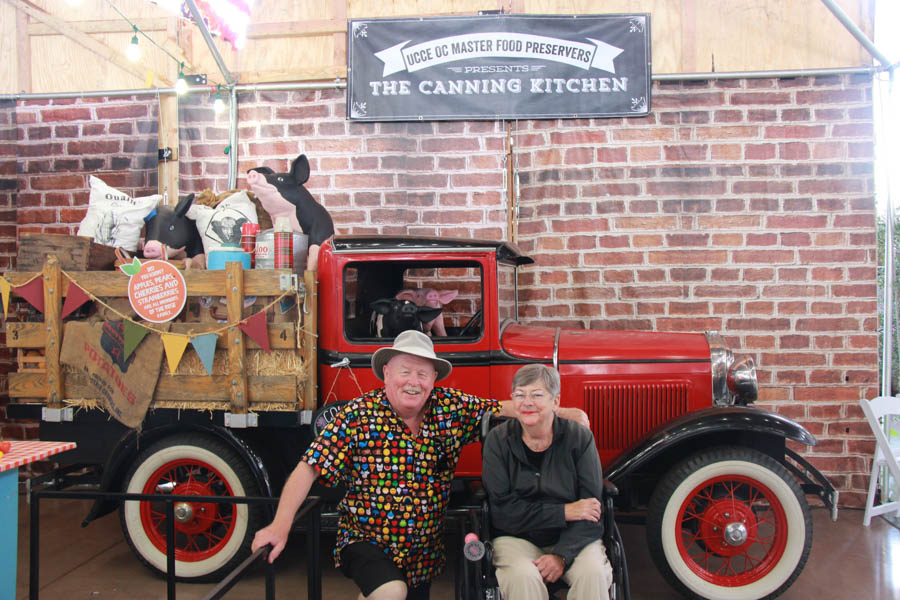
We took a short rest stop!

We decided it was time to move on!

We have departed the building!

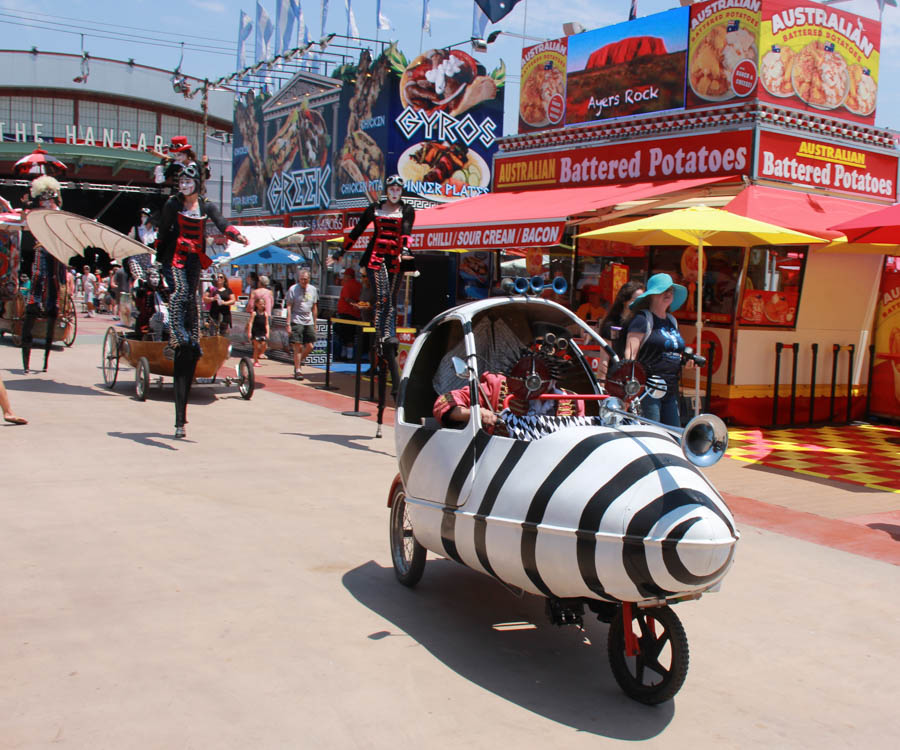
Steampunk stilt walkers dance in the middle of the OC Fair
Did You Know? - Steampunk is a subgenre of science fiction or science fantasy that incorporates technology and aesthetic designs inspired by 19th-century industrial steam-powered machinery.
Although its literary origins are sometimes associated with the cyberpunk genre, steampunk works are often set in an alternative history of the 19th century's British Victorian era or American "Wild West", in a post-apocalyptic future during which steam power has maintained mainstream usage, or in a fantasy world that similarly employs steam power. Therefore, steampunk may be described as neo-Victorian.
Steampunk perhaps most recognisably features anachronistic technologies or retro-futuristic inventions as people in the 19th century might have envisioned them, and is likewise rooted in the era's perspective on fashion, culture, architectural style, and art.
Such technology may include fictional machines like those found in the works of H. G. Wells and Jules Verne, or of the modern authors Philip Pullman, Scott Westerfeld, Stephen Hunt, and China Miéville.
Other examples of steampunk contain alternative-history-style presentations of such technology as lighter-than-air airships, analogue computers, or such digital mechanical computers as Charles Babbage's Analytical Engine.
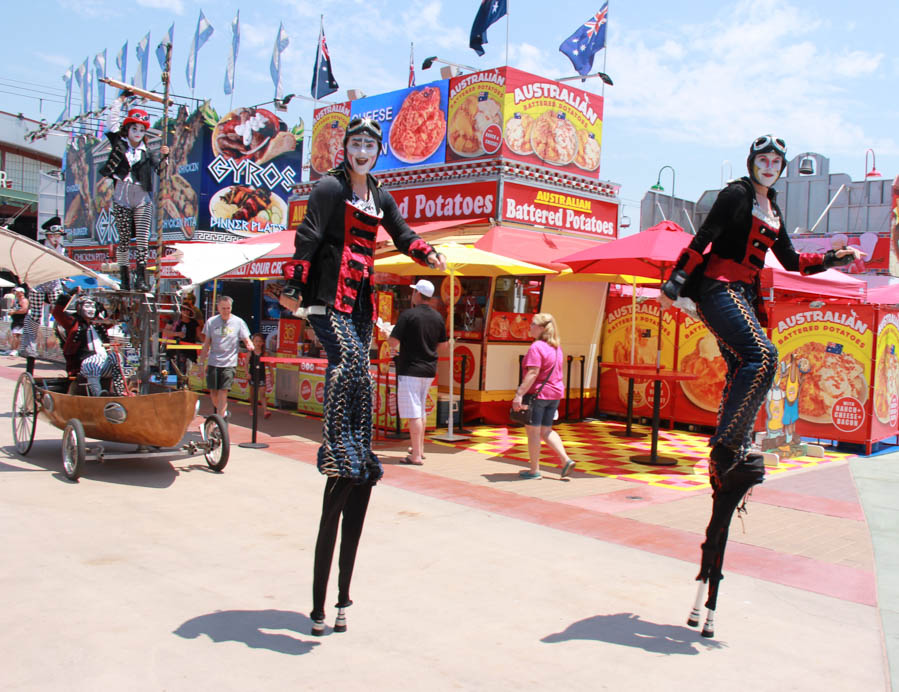
They certainly get ones attention!

It's called "floating your boat!"
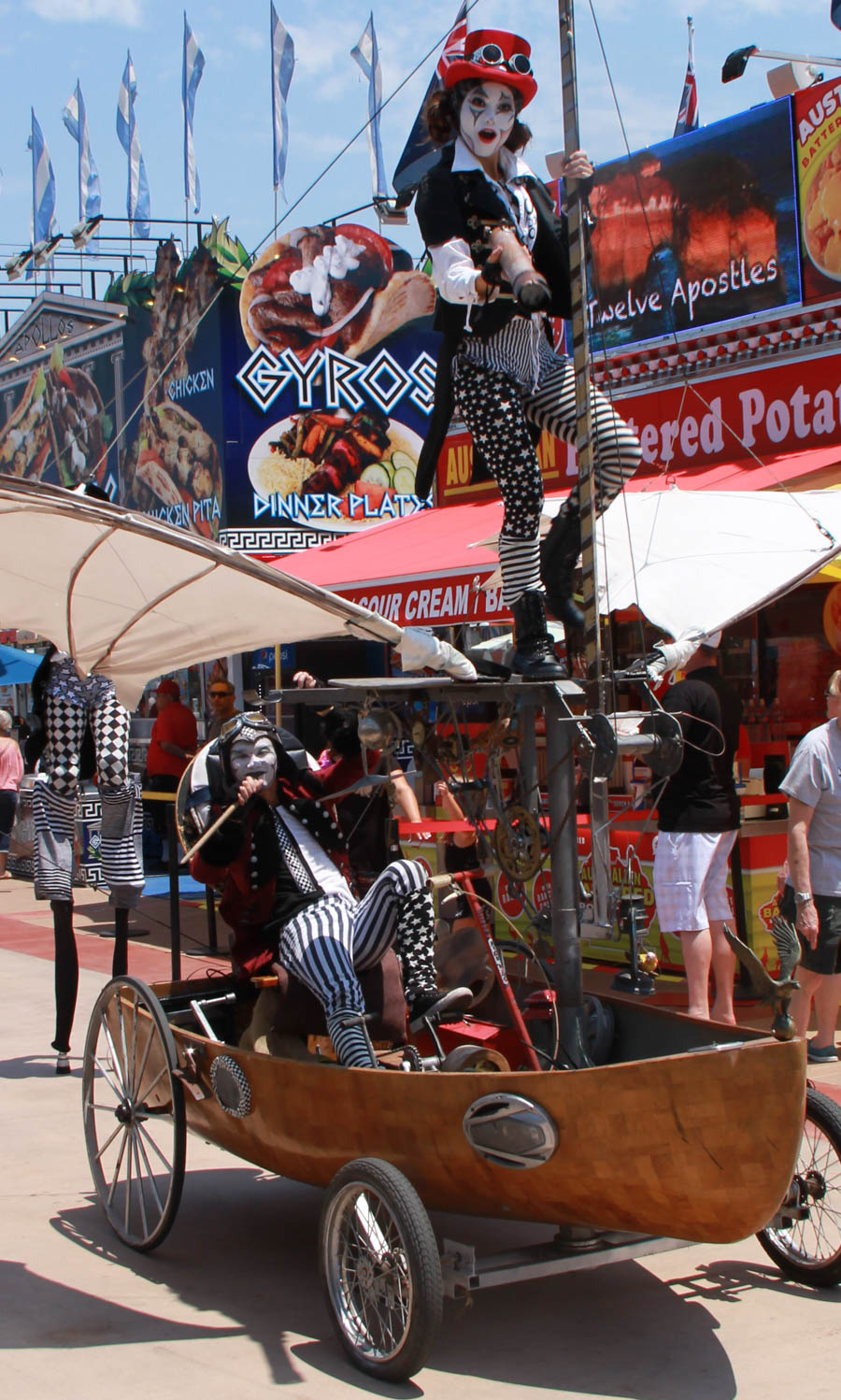
Who thinks up these things?

...and it is steerable!

A face only a mother could love!
